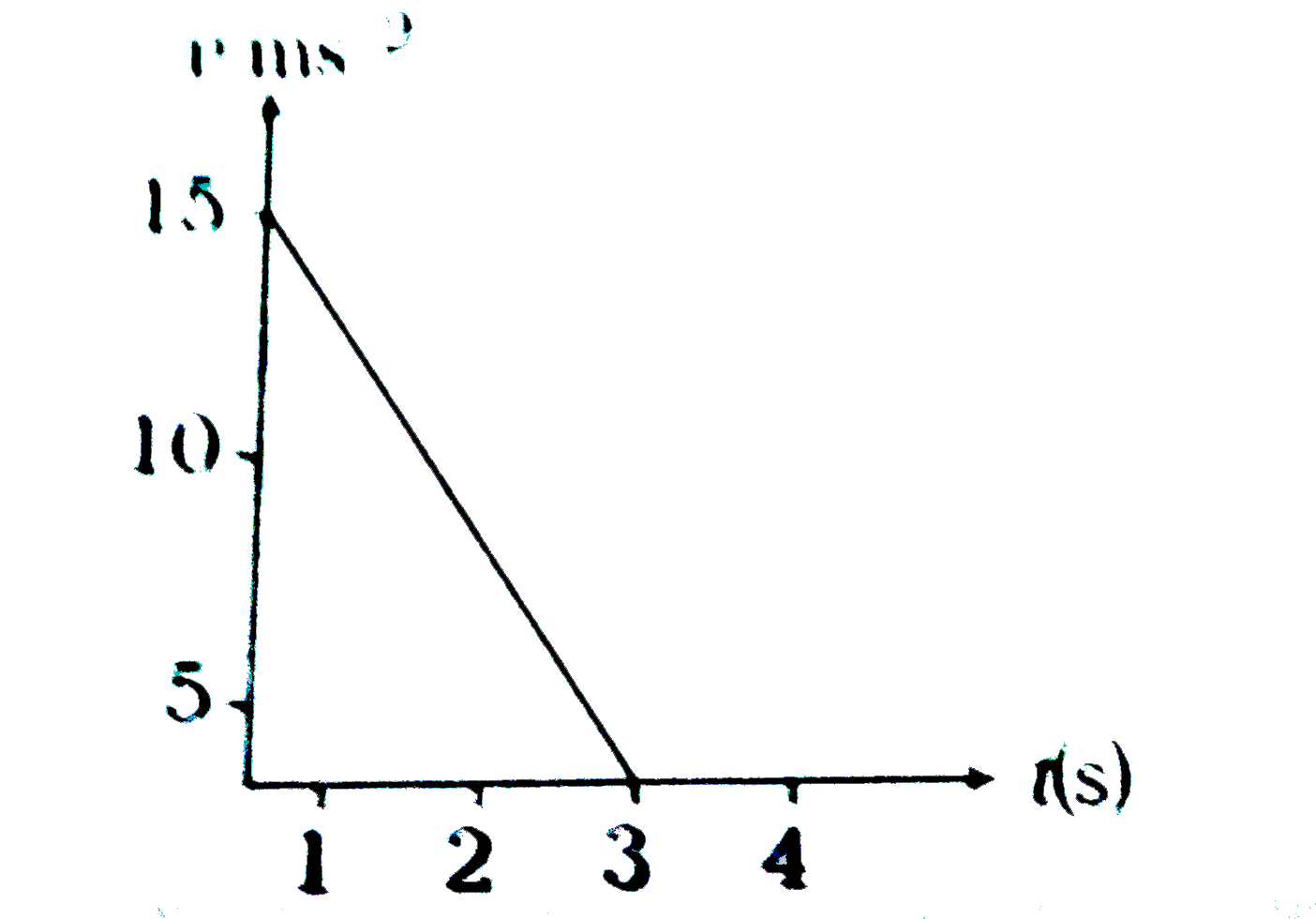The velocity time curve of a moving point is shown in Fig. Find the retardation of the particle for the porion CD.
 .
.
The slope of the velocity-time graph represents acceleration or positive, it represents accelecration and if the slope is negatitve, positive, it represents acceleation and if the slope is negative, it represents retardation. The section CD of the graphe retesebts retardation and magnitude of retardtion is
|→a|=Chan≥∈veloityTimetaken=60(70−40)=2ms−2.
Topper's Solved these Questions
- KINEMATICS-1BOOK - CENGAGE PHYSICS ENGLISHCHAPTER - KINEMATICS-1EXERCISE - Solved Examples
9 Videos
- KINEMATICS-1BOOK - CENGAGE PHYSICS ENGLISHCHAPTER - KINEMATICS-1EXERCISE - Exercise 4.1
17 Videos
- GRAVITATIONBOOK - CENGAGE PHYSICS ENGLISHCHAPTER - GRAVITATIONEXERCISE - INTEGER_TYPE
1 Videos
- KINEMATICS-2BOOK - CENGAGE PHYSICS ENGLISHCHAPTER - KINEMATICS-2EXERCISE - Exercise Integer
9 Videos
Similar Questions
Knowledge Check
The velocity time graph of a body is shown in fig. 3.3. it implies that at point B
 Athe force is zeroBthere is a force towards motionCthere is force which oppose motionDnone of the above
Athe force is zeroBthere is a force towards motionCthere is force which oppose motionDnone of the above
The velocity − time graph of a particle is as shown in figure

View SolutionThe velocity-time graph of a moving body is given below in Fig. 2.43.(i) the acceleration in parts AB, BC and CD. Find :
(ii) displacement in each part AB, BC, CD, and
(iii) total displacement.

View SolutionThe velocity - time graph is shown in the figure, for a particle. The acceleration of particle is

View SolutionThe velocity-time graph of a particle moving in a staight line is shown in the . Find the displacement and the distance trav elled by the particle in 6s.
 .
.
View SolutionThe velocity-time graph of a body moving in a straight line is shown in Fig. Find the displacement and distance travelled by the body in 10 sec.

View SolutionFrom the velocity-time plot shown in Fig. find the distance travelled by the particle during the first 40s. Also find the average velocity during this period.

View SolutionA particle of mass 1 g moves on a straight line. The variation of its velocity with time is shown in fig. Find the force acting on the particle att = 1 s,4s and 7 s.
View Solution


